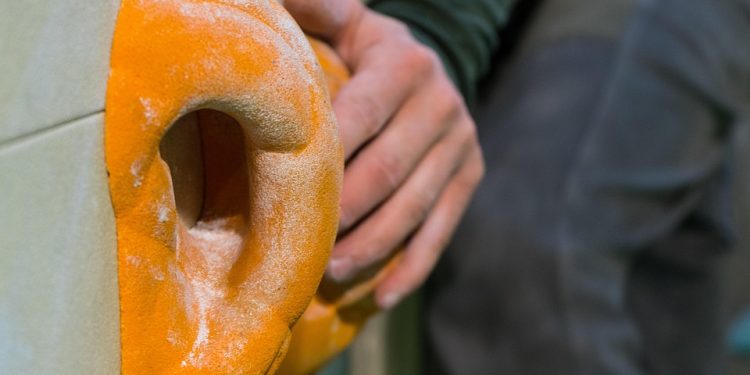High-Intensity Interval Training (HIIT) has exploded in popularity, and for good reason. It’s a time-efficient way to torch calories, improve cardiovascular health, and build muscle. But if you’re new to HIIT, the intensity can seem intimidating. This guide will break down everything you need to know to safely and effectively start your HIIT journey.
What is HIIT?
HIIT involves short bursts of intense exercise followed by periods of rest or low-intensity recovery. This cycle is repeated several times during a workout. The “high intensity” part is key – you should be pushing yourself close to your maximum effort during the work intervals.
Think of it like this: imagine sprinting as fast as you can for 30 seconds, then walking for a minute. Repeat that several times, and you’ve got a basic HIIT workout.
Why Choose HIIT?
- Time Efficiency: HIIT workouts are typically shorter than traditional cardio, often lasting just 20-30 minutes.
- Calorie Burning: You burn a significant number of calories during a HIIT workout and continue to burn calories even after you’re finished, thanks to the “afterburn effect” (Excess Post-exercise Oxygen Consumption, or EPOC).
- Improved Cardiovascular Health: HIIT can improve your VO2 max (the maximum amount of oxygen your body can use during exercise) and lower your blood pressure.
- Muscle Building and Retention: While not primarily for muscle building like weightlifting, HIIT can help preserve or even slightly increase muscle mass, especially when combined with resistance exercises.
- Increased Metabolism: HIIT can boost your metabolism, making it easier to lose weight and maintain a healthy body composition.
- Convenience: HIIT can be done anywhere with minimal equipment.
Getting Started with HIIT: A Beginner’s Approach
The key to success with HIIT is to start slowly and gradually increase the intensity and duration of your workouts. Jumping in too quickly can lead to injury or burnout.
1. Assess Your Fitness Level
Before starting any new exercise program, it’s important to assess your current fitness level. If you haven’t exercised in a while, consult with your doctor to make sure HIIT is safe for you. Consider starting with a lower-impact form of exercise like walking or cycling to build a base level of fitness.
2. Choose Your Exercises
For beginners, bodyweight exercises are a great way to start with HIIT. These exercises require no equipment and can be easily modified to suit your fitness level. Here are some examples:
- Squats: A fundamental exercise that works your glutes, quads, and hamstrings.
- Push-ups: A classic exercise that strengthens your chest, shoulders, and triceps. Start on your knees if needed.
- Lunges: Another great exercise for your legs and glutes.
- Plank: An isometric exercise that strengthens your core.
- Jumping Jacks: A simple cardio exercise that gets your heart rate up.
- High Knees: A cardio exercise that involves bringing your knees up towards your chest.
- Butt Kicks: A cardio exercise that involves kicking your heels up towards your glutes.
3. Structure Your HIIT Workout
A typical beginner HIIT workout might look like this:
- Warm-up (5 minutes): Light cardio, such as jogging in place or jumping jacks, followed by dynamic stretching, such as arm circles and leg swings.
- Work Interval (30 seconds): Perform a high-intensity exercise, such as squats, push-ups, or jumping jacks.
- Rest Interval (60 seconds): Rest or perform a low-intensity exercise, such as walking in place.
- Repeat Work/Rest Cycle (8-10 times): Alternate between the work and rest intervals for a total of 8-10 rounds.
- Cool-down (5 minutes): Static stretching, such as holding stretches for 30 seconds each.
Example Beginner HIIT Workout:
- Warm-up (5 minutes)
- 30 seconds Jumping Jacks
- 60 seconds Rest
- 30 seconds Squats
- 60 seconds Rest
- 30 seconds Push-ups (on knees if needed)
- 60 seconds Rest
- 30 seconds Lunges (alternating legs)
- 60 seconds Rest
- Repeat the cycle 2 more times (total of 3 rounds)
- Cool-down (5 minutes)
4. Focus on Proper Form
Maintaining proper form is crucial to prevent injuries. If you’re unsure about the correct form for an exercise, watch videos or consult with a certified personal trainer. It’s better to do fewer repetitions with good form than to do more repetitions with bad form.
5. Listen to Your Body
HIIT is designed to be challenging, but it shouldn’t be painful. If you experience any pain, stop the exercise and rest. Don’t push yourself too hard, especially when you’re just starting out. It’s perfectly okay to modify exercises or take longer rest intervals if needed.
6. Gradually Increase Intensity and Duration
As you get fitter, you can gradually increase the intensity and duration of your HIIT workouts. You can do this by:
- Increasing the length of the work intervals (e.g., from 30 seconds to 45 seconds).
- Decreasing the length of the rest intervals (e.g., from 60 seconds to 30 seconds).
- Increasing the number of repetitions (e.g., from 8 rounds to 12 rounds).
- Adding more challenging exercises (e.g., burpees, mountain climbers).
- Adding resistance (e.g., using dumbbells or resistance bands).
7. Consistency is Key
Aim for 2-3 HIIT workouts per week, with rest days in between. Consistency is key to seeing results. Don’t get discouraged if you don’t see results immediately. It takes time and effort to build fitness.
HIIT Workout Variations for Beginners
Once you’re comfortable with the basic HIIT structure, you can start experimenting with different variations to keep things interesting.
Tabata Training
Tabata is a specific type of HIIT that involves 20 seconds of intense exercise followed by 10 seconds of rest, repeated for 8 rounds (4 minutes total). This is a very intense form of HIIT, so start with fewer rounds and gradually increase as you get fitter.
Walking or Running HIIT
If you prefer to exercise outdoors, you can do HIIT by alternating between sprints and walking or jogging. For example, sprint for 30 seconds, then walk for 60 seconds. Repeat for 10-15 rounds.
Cycling HIIT
Cycling is another great option for HIIT. You can alternate between high-intensity cycling and low-intensity cycling or rest. For example, cycle as hard as you can for 30 seconds, then cycle at a moderate pace for 60 seconds. Repeat for 10-15 rounds.
Swimming HIIT
Swimming is a low-impact exercise that’s great for HIIT. You can alternate between sprinting and swimming at a moderate pace. For example, swim as fast as you can for 30 seconds, then swim at a moderate pace for 60 seconds. Repeat for 10-15 rounds.
Important Considerations for HIIT
While HIIT is a highly effective workout, it’s important to be aware of potential risks and take precautions to stay safe.
Warm-up and Cool-down
Always warm up before a HIIT workout and cool down afterwards. This will help to prevent injuries and improve your performance. A proper warm-up prepares your muscles for exercise, while a cool-down helps your body recover.
Hydration and Nutrition
Stay hydrated by drinking plenty of water before, during, and after your HIIT workouts. Eating a balanced diet that includes plenty of protein and carbohydrates will also help you to fuel your workouts and recover properly.
Proper Sleep
Getting enough sleep is essential for recovery and overall health. Aim for 7-9 hours of sleep per night. Lack of sleep can impair your performance and increase your risk of injury.
Avoid Overtraining
Overtraining can lead to fatigue, injury, and decreased performance. Listen to your body and take rest days when needed. Don’t do HIIT workouts every day. Allow your body time to recover between workouts.
Listen to Your Body
Pay attention to your body’s signals. If you experience any pain or discomfort, stop the exercise and rest. Don’t push yourself too hard, especially when you’re just starting out. It’s better to err on the side of caution than to risk injury.
Conclusion
HIIT is a fantastic way to improve your fitness, burn calories, and build muscle in a short amount of time. By following this beginner’s guide, you can safely and effectively incorporate HIIT into your workout routine. Remember to start slowly, focus on proper form, listen to your body, and gradually increase the intensity and duration of your workouts. With consistency and dedication, you’ll be well on your way to achieving your fitness goals with HIIT!
Frequently Asked Questions (FAQs)
Here are some common questions about HIIT for beginners:
Q: Is HIIT safe for beginners?
A: Yes, HIIT can be safe for beginners if you start slowly, focus on proper form, and listen to your body. It’s important to gradually increase the intensity and duration of your workouts as you get fitter.
Q: How often should I do HIIT workouts?
A: Aim for 2-3 HIIT workouts per week, with rest days in between. This will allow your body time to recover and prevent overtraining.
Q: What if I can’t do the exercises at the high intensity required?
A: That’s perfectly fine! Modify the exercises to suit your fitness level. For example, do push-ups on your knees instead of on your toes. Or, walk instead of sprint during the work intervals. The key is to push yourself as hard as you can while maintaining good form.
Q: What should I eat before and after a HIIT workout?
A: Before a HIIT workout, eat a light meal or snack that includes carbohydrates and protein. This will provide you with energy for your workout. After a HIIT workout, eat a meal or snack that includes protein and carbohydrates to help your muscles recover.
Q: Can I do HIIT every day?
A: It’s generally not recommended to do HIIT every day, especially when you’re just starting out. Your body needs time to recover between workouts. Aim for 2-3 HIIT workouts per week with rest days in between.
Q: What are some signs of overtraining?
A: Signs of overtraining include fatigue, muscle soreness, decreased performance, difficulty sleeping, and increased irritability. If you experience any of these symptoms, take a break from HIIT and allow your body to recover.
Q: Do I need any special equipment for HIIT?
A: No, you don’t need any special equipment for HIIT. Bodyweight exercises are a great way to start. As you get fitter, you can add resistance using dumbbells or resistance bands.
Q: How long should a HIIT workout last?
A: A beginner HIIT workout can last anywhere from 20-30 minutes, including warm-up and cool-down. As you get fitter, you can gradually increase the duration of your workouts.
Q: Will HIIT help me lose weight?
A: Yes, HIIT can be an effective way to lose weight. It burns a significant number of calories and can help to boost your metabolism. However, weight loss also depends on your diet and overall lifestyle.












